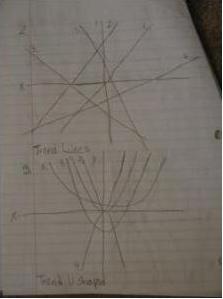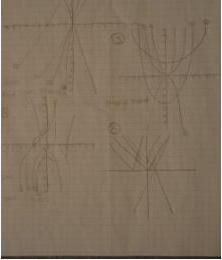Lesson Plans
I am a planner. I have been for my entire life. I make lists for everything, groceries, daily tasks, and possible Chirstmas gifts are a few examples. I am also an organizer. My movies are alphabetized, as are my books and CDs. I have files for all of my bills, and other files for important documents. I am a firm believer that everything has a place, and everything should be put in its place. I am also a firm believer that being planned and organized contributes to a calm, peaceful life.
Being a planner and an organizer has come in handy while teaching. I always know what I am doing the next day, and have the materials made at least a day in advance. Being ready for each day is an important part of having a smoothly running classroom.
I follow a particular pattern when I plan lessons. The first thing I do is look at a nine weeks as a whole. I make an outline of when there will be tests, and what topics will covered on which days. Next, I look at individual weeks and fill out the district lesson plan grid. At this point I begin to think about how I will teach each topic, what my students will be doing on each day. Lastly, I write a daily lesson plan with specific details, and the materials to go along with that plan. These daily lessons plans are where I decide exactly what will happen on any given day.
I have included two lesson plans, both for different reasons.
The first lesson plan I have chosen to discuss integrates technology and focuses on developing students recognition of patterns pertaining to functions and graphs. In this lesson students use graphing calculators to sketch and compare graphs of different functions. I have found that students enjoy using the calculators, and are much more receptive to learning new concepts when they have a calculator to help.
The calculator is particularly helpful in this lesson, because the focus in on finding patterns, not correctly graphing functions. Using the calculator allows the students to focus on the larger picture instead of the details. By graphing constant, linear, quadratic, cubic, and absolute value functions, students can develop an understanding of what these graphs look like.
In this lesson, the student uses the calculator to graph different function families. After graphing the different functions the student compares the functions and the graphs looking for patterns. As a result students are making connections on their own, instead of being told what the patterns are. This type of learning has a larger impact on the learner. For one thing, they are coming up with new knowledge on their own. Secondly, this type of learning develops confidence in the learner. As students make more connections, and discover more patterns, they gain confidence in their ability to conquer new concepts.
A PDF file of the lesson plan is given below as well as a PDF version of the flipchart for the day. You can see more examples of student work here.
| 12.1_graphing_functions.pdf | |
| File Size: | 60 kb |
| File Type: | |
| 12.1_flipchart.pdf | |
| File Size: | 848 kb |
| File Type: | |
I chose the second lesson plan because it uses cooperative learning. Although I have attached the lesson plan for April 9th below, this lesson has been used multiple times adapting the questions for whatever the current topic is. Cooperative learning is an effective teaching method. Students will often learn more from each other than they do from the teacher.
I allow my students to chose their own groups. By the time students reach high school they are aware of who the 'smart' kids are, and will take advantage of them if placed in the same groups. By allowing them to chose their own groups they self select to work with people at their same level. They also self select to chose to work with people they will actually work with. Cooperative learning groups also promote discussion, and idea sharing.
In addition to using cooperative learning this lesson also requires students to explain their answers and use multiple representations. The students are required to know and use multiple methods to solve the same problem as well as be able to explain their answers. Students can memorize procedures, but to be sure they understand the concepts they must be able to explain what they are doing and why.
A PDF version of the lesson plan is given below.
| 4.9_poster_session.pdf | |
| File Size: | 55 kb |
| File Type: | |
| 4.9_poster_problems.pdf | |
| File Size: | 49 kb |
| File Type: | |
To go back to the home page click here.


